A&P Ocular Adnexa
1/100
There's no tags or description
Looks like no tags are added yet.
Name | Mastery | Learn | Test | Matching | Spaced |
|---|
No study sessions yet.
101 Terms
Nerve supply of eyebrows
CN VII
Frontalis
Raises eyebrows
Corrugator supercilli
Move eyebrow medially (Trouble or concentration)
Procerus
Pulls the medial side of eyebrow medially (Menace or aggression)
Function of eyebrows
Aesthetics/emotion
Protect eyeball from injury superiorly
Protect eye from bright sunlight
Helps sense stimulation and react accordinaly (A lot of nerves)
Palpebral fissure
Exposed zone between the upper and lower eyelids
Muscle opening the eye lid
Levator palpabrae superioris
CN III
Muscle closing the eye lid
Orbicularis oculi
Innervated by CN VII
Upper eye lid blood supply
internal carotid artery → the ophthalmic artery → the superior marginal arcade
Inferior eyelid carotid artery
External carotid artery → the facial artery → the angular artery → the inferior marginal artery
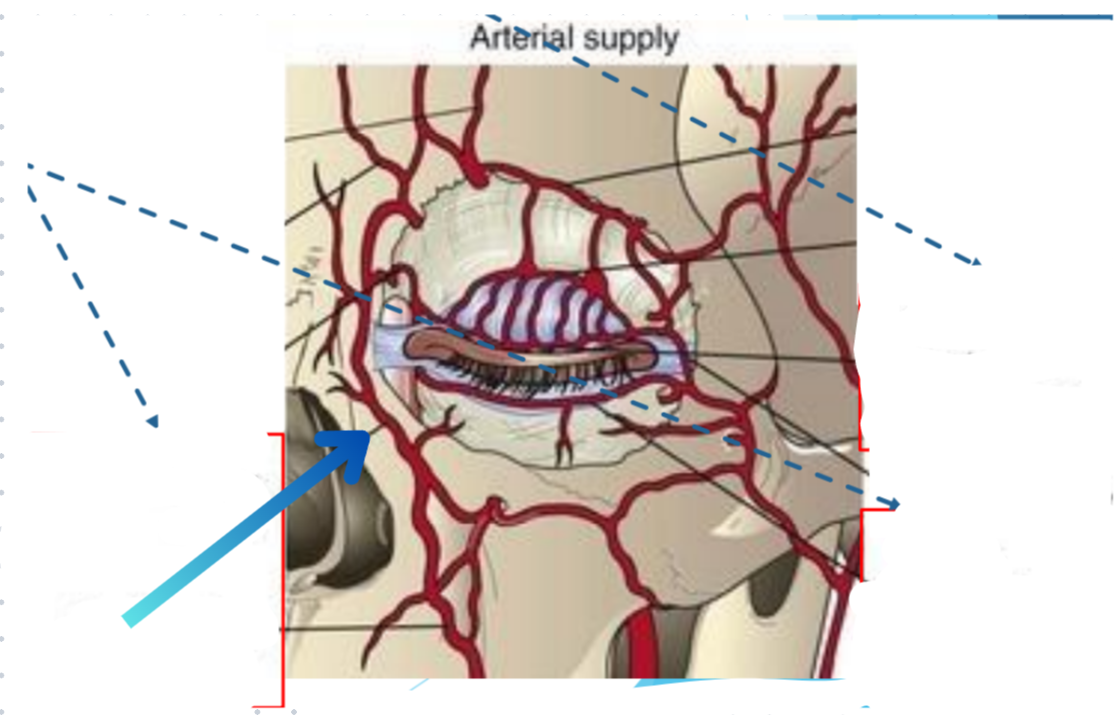
EAC → Angular artery
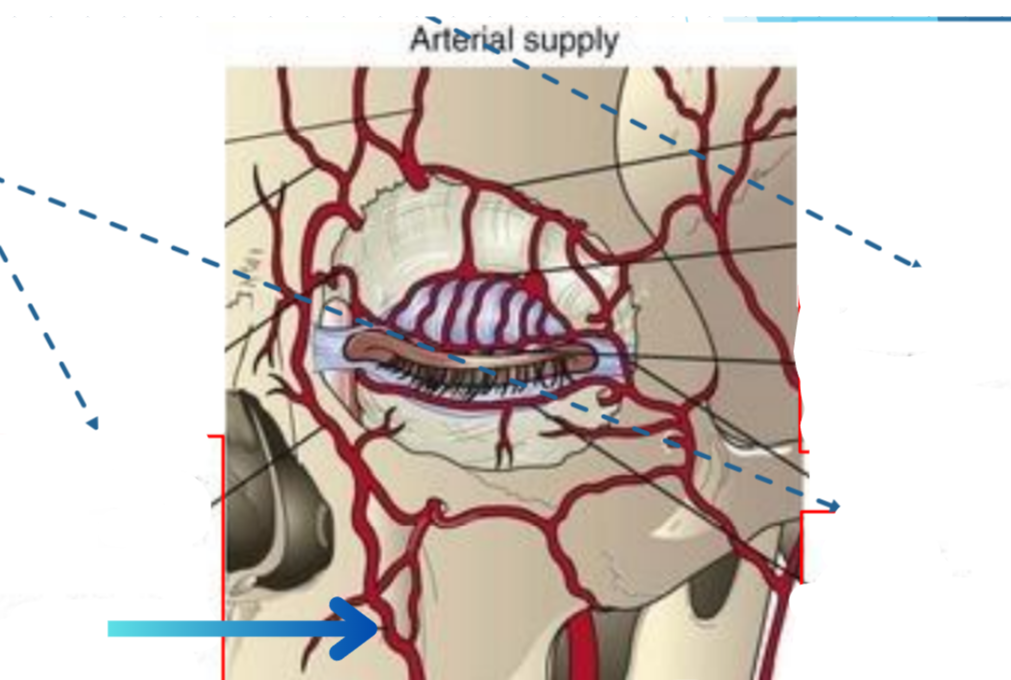
EAC → Facial artery
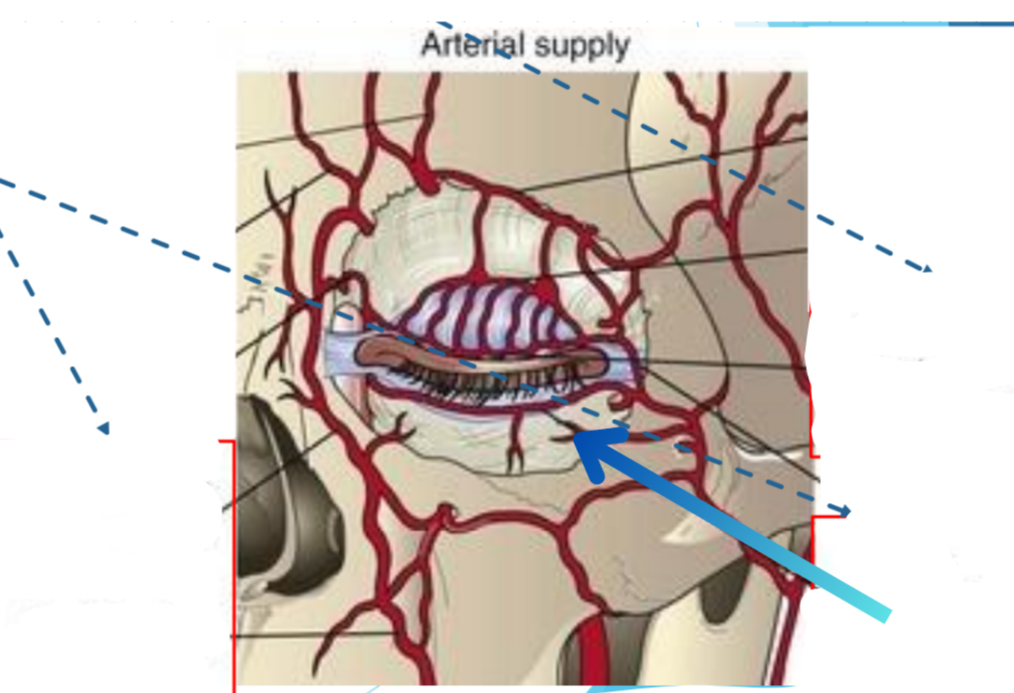
EAC → Inferior marginal arterial arcade
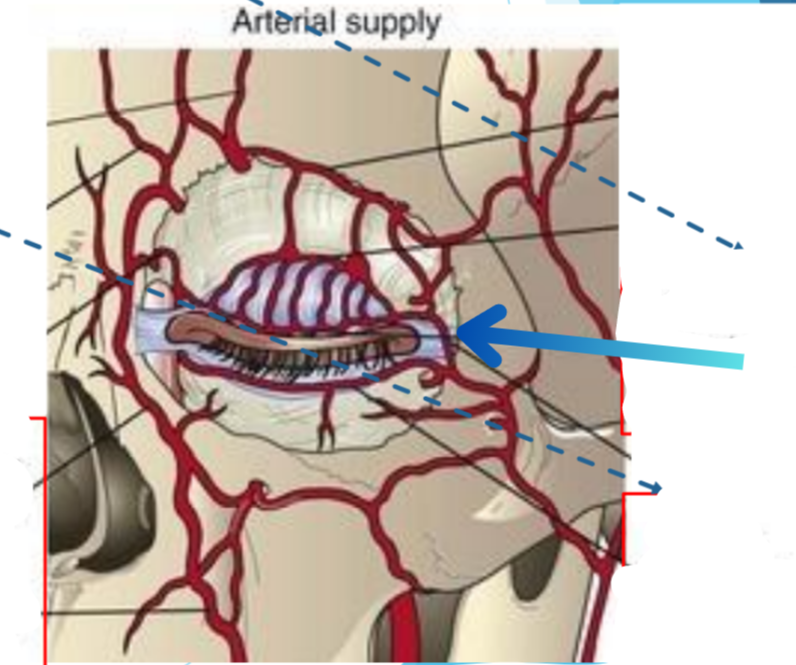
IAC → Superior marginal arterial arcard
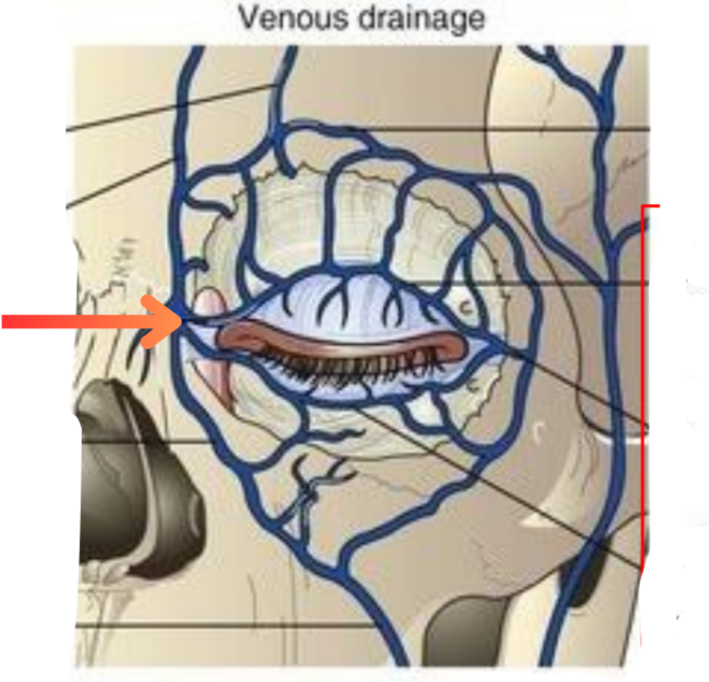
Medial palpebral veins
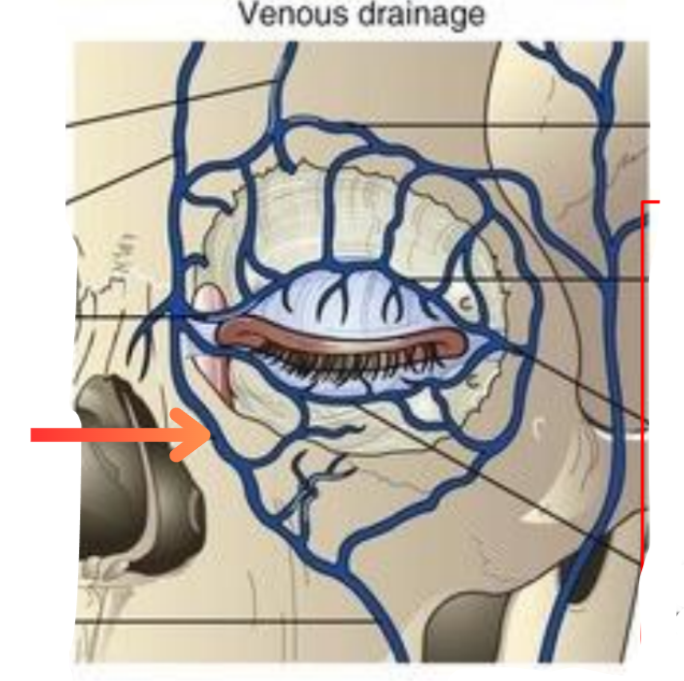
Angular vein
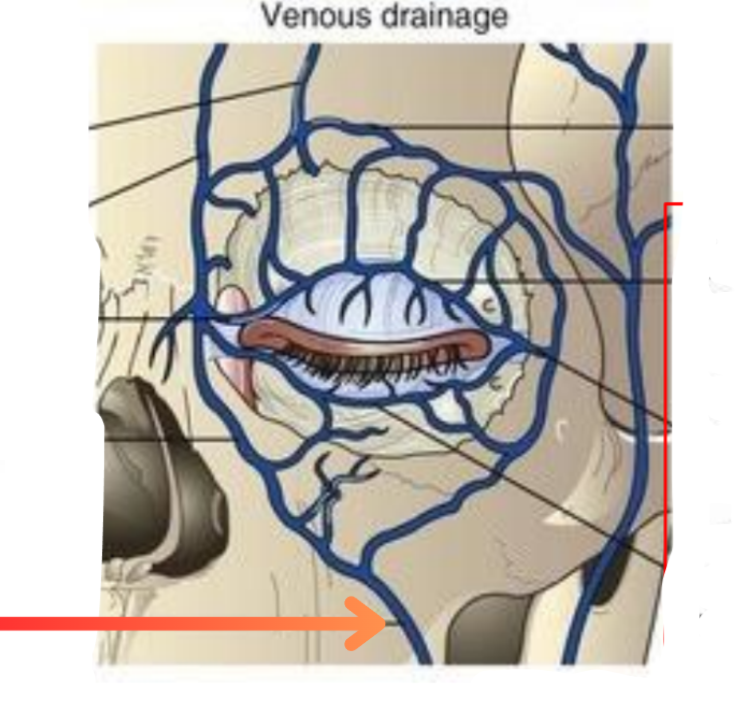
Anterior facial vein
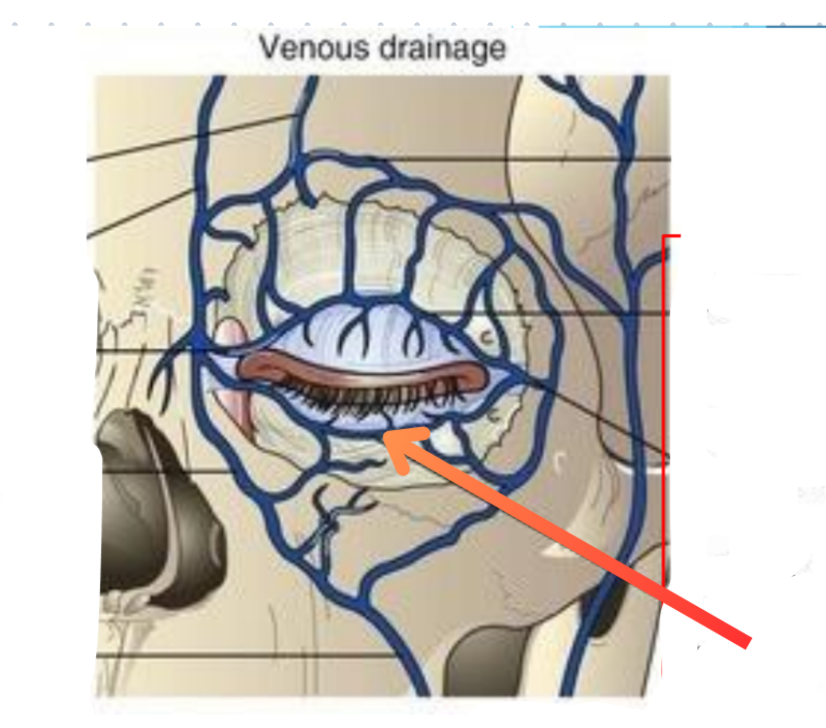
Inferior peripheral venous arcade
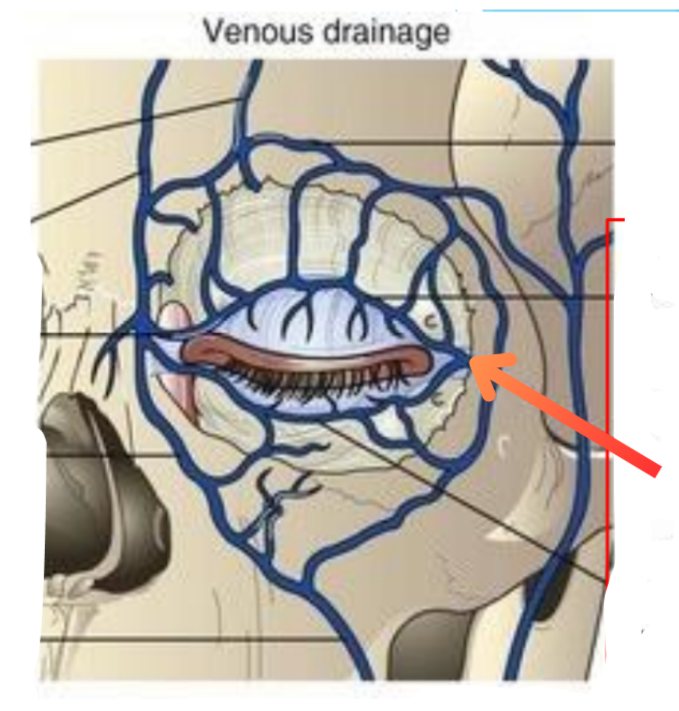
Lateral palpebral vein
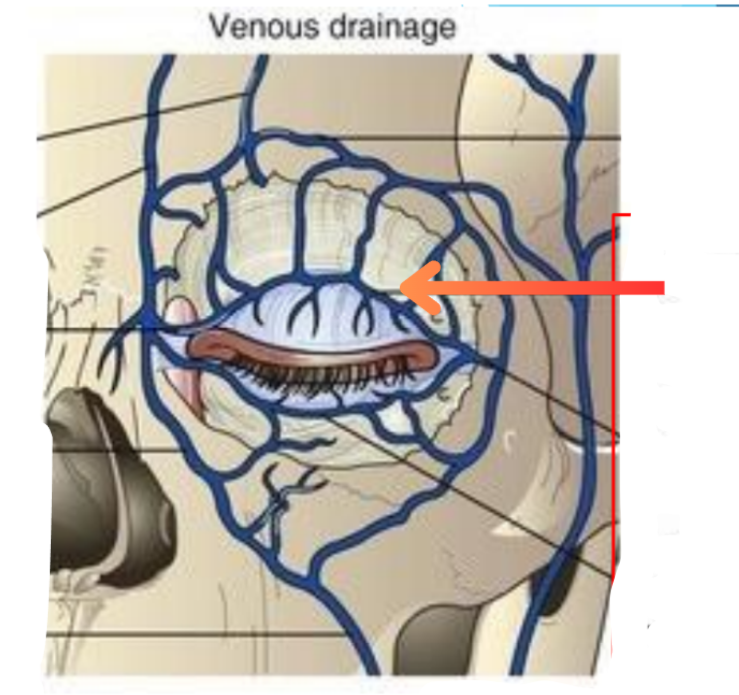
Superior peripheral venous arcade
Pre-auricular lymph nodes drain the…
Lymph from upper eyelid and outer half of the lower eyelid
Submandibular lymph nodes drain the…
Lymph from a small part of middle of upper eyelid and inner half of lower eyelid
Medial eye lid margin
Lacrimal portion
Rounded, devoid of lashes or glands
Lateral eyelid margin
Ciliary portion
Rounded anterior obrder, sharp posterior boderde
Eyelid margins
2mm broad
Divided into lateral and medial portion by the punctum
Eyelashes
2-3 rows
100-150 days life span
Glands of the eyelashes
Sebaceous glands of zeiss
Modified sweat glands
Glands of moll
All open into each eyelash follicle
Distichiasis
Extra layer of eyelashes
Trichiasis
Eyelashes that curve inward
Entropion
Inward-turned eyelid
Ectropian
Outward-turned eyelid
Blepharitis
Inflammation of oil glands
Trichomegaly
Excessive lash growth
Palpebral fissure measurments
25-30 mm horizontally
10-12 mm verticall
When the eyelid closes…
Orbicularlis oculi contracts
Canalculi closes
Lacrimal sac expands (Liquid moves into lacrimal sac)
When eyelid opens…
Orbicularis oculi relaxes
Canaliculi opens
Lacrimal sac retracts (Negative pressure moves liquid down)
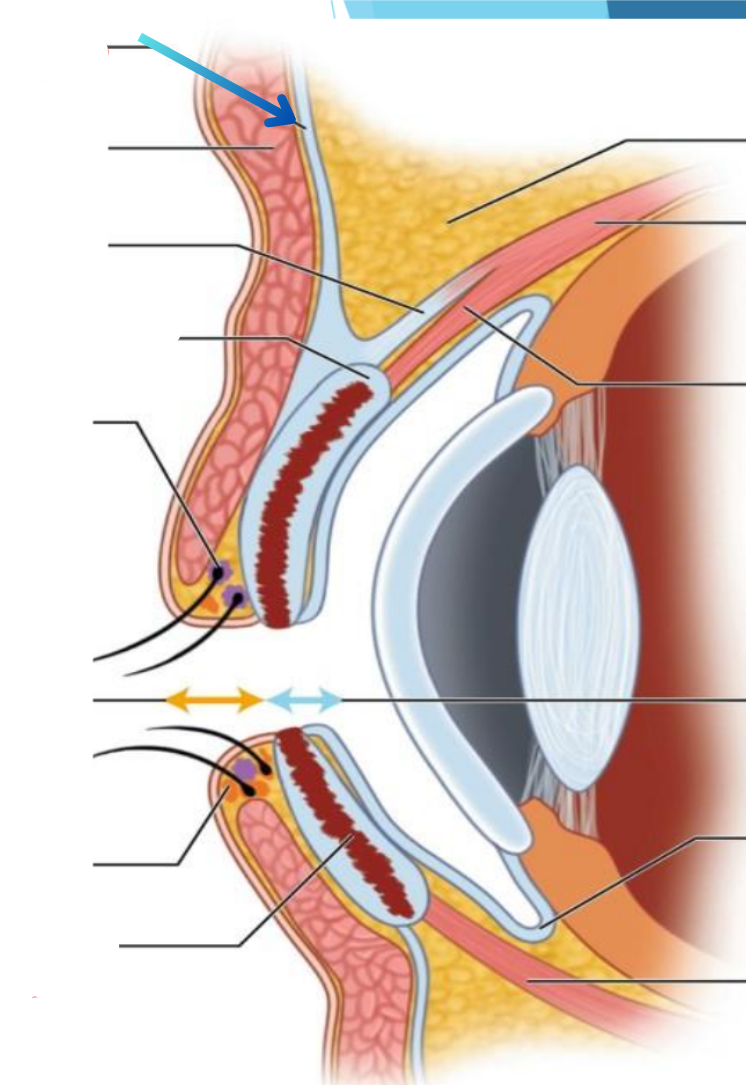
Septum
Thin membrane of connective tissue
Vessels and LPS muscle, enter the lids from the orbit
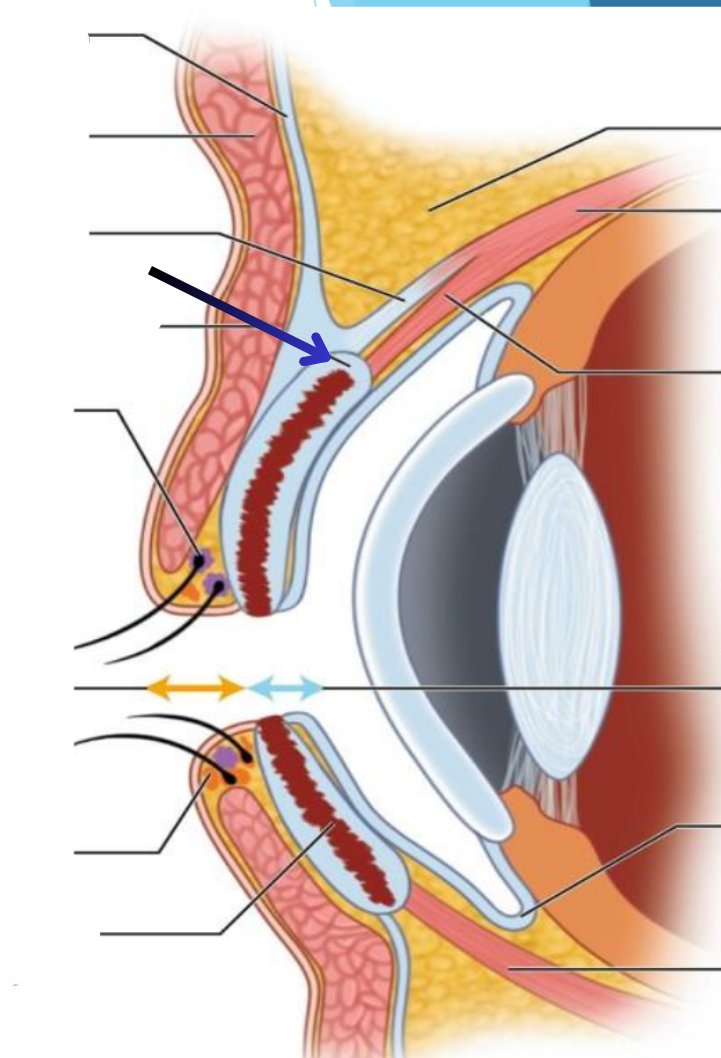
Tarsus
Two plates of dense connective tissue
Give shape and firmness to the lid
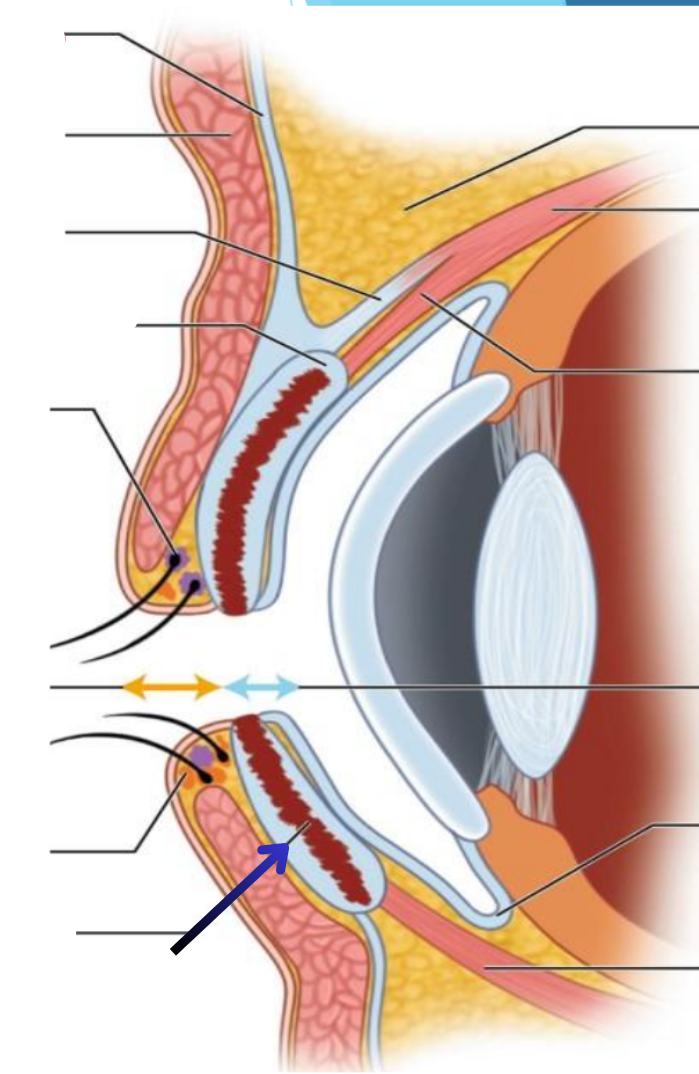
Meibomian gland
Lie in parralel rows in the tarsal plates
Muller muscle
Constists of the palpebral muscle of muller
Inserted on the peripheral margins of the tarsal plate
CN III innervation
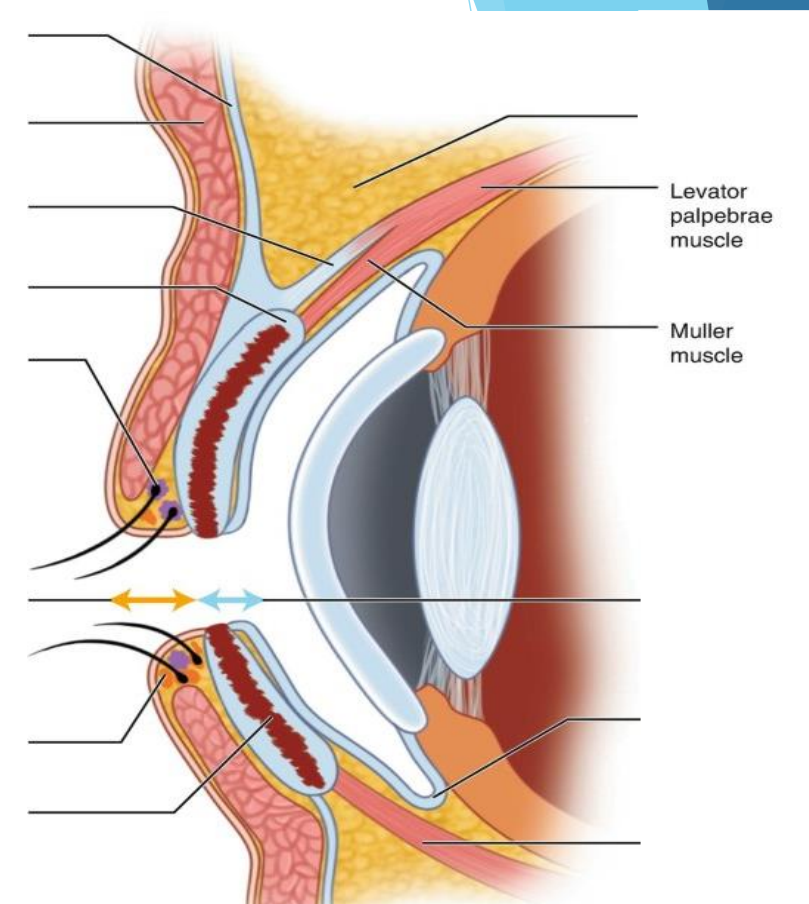
Where does the muller muscle arise in the upper lid
From the fibres of the LPS muscle
Meibomian glands
Modified sebaceous glands
Located in stroma of tarsal plate
Upper contains more than lower
Ducts open at lid margin
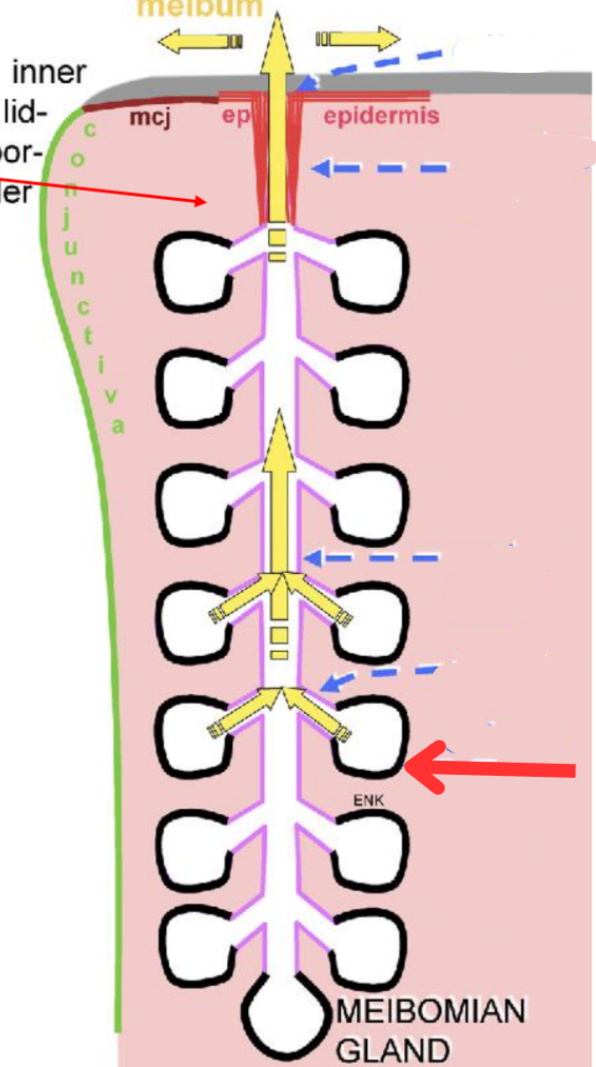
Acini
Lined with epithelial cells
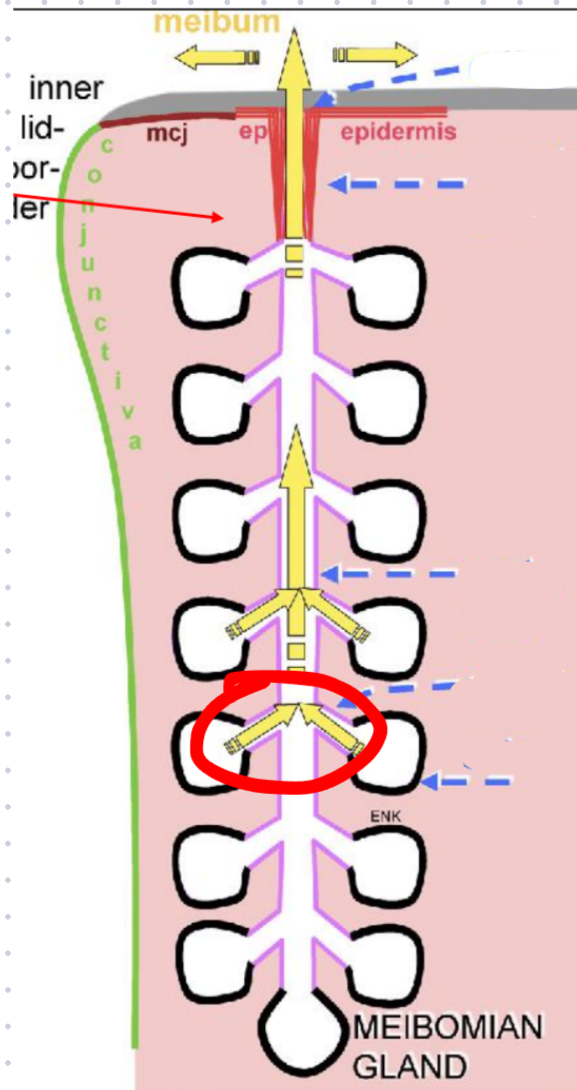
Ductule
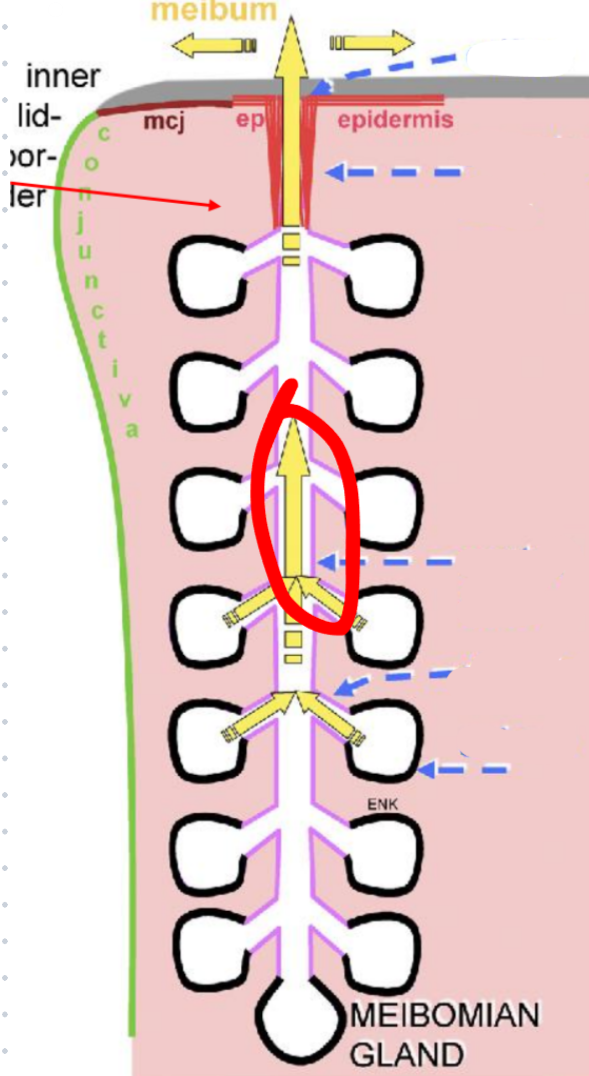
Central duct
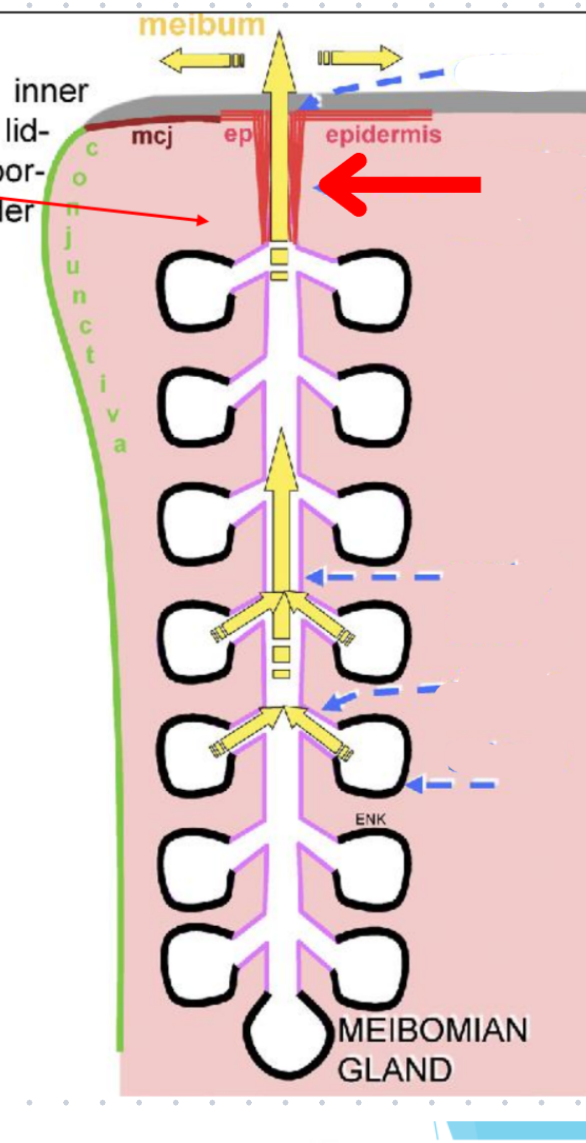
Excretory duct
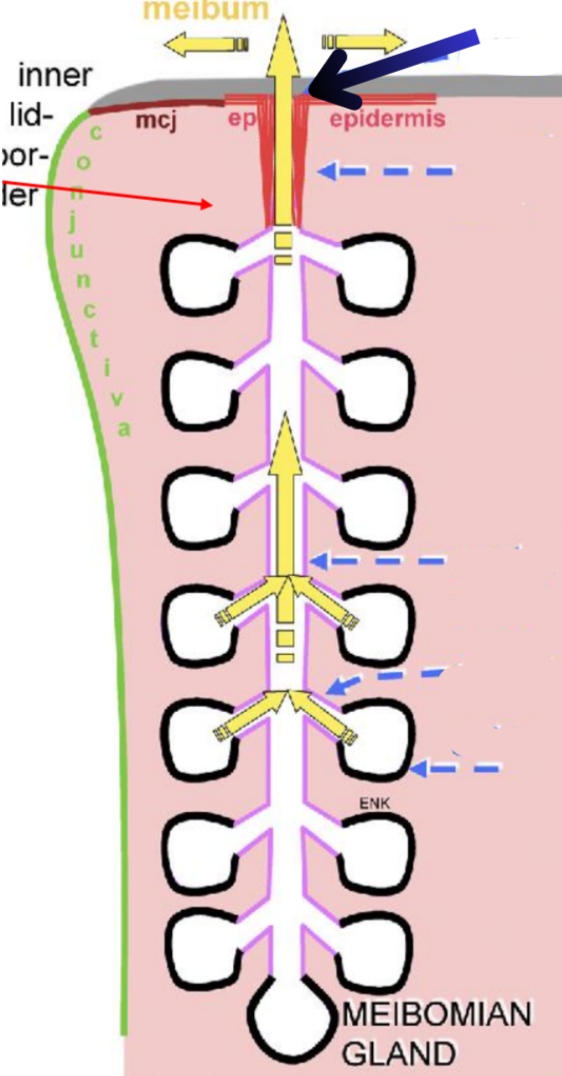
Orifice
Normal, loss, and malformed meibomian glands
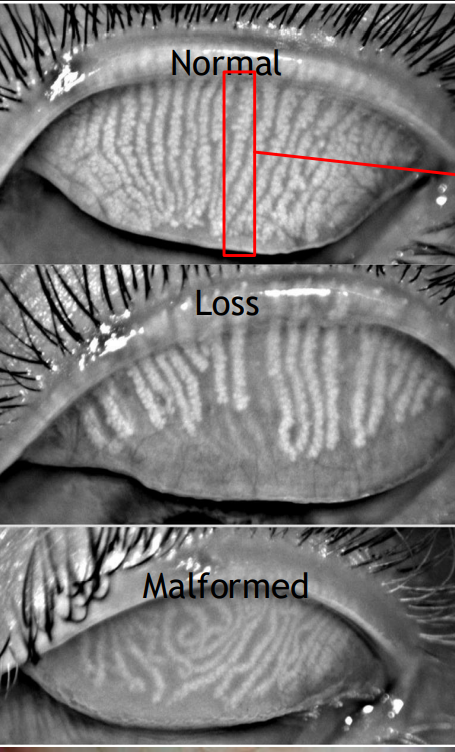
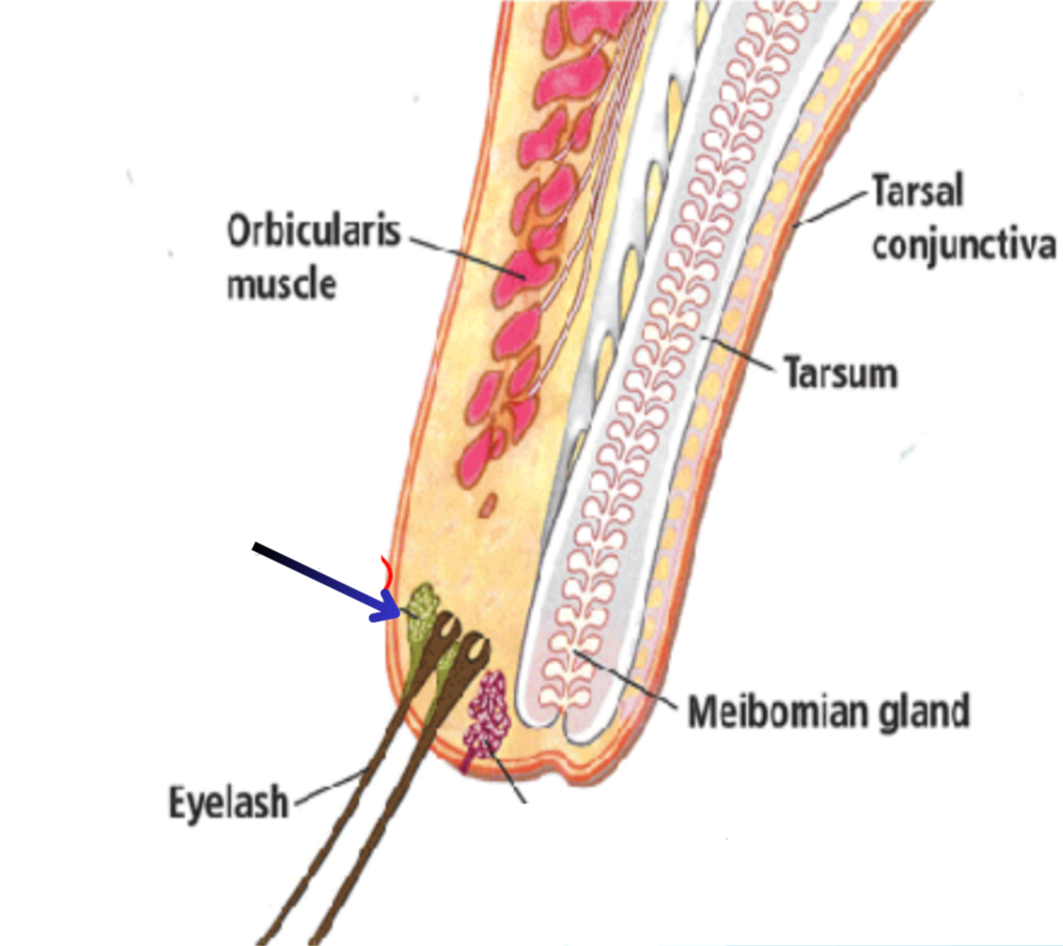
Glands of zeiss
Sebaceous glands
Attaches directly into follicles of eyelashes
Prevents eyelashes from being dry and brittle
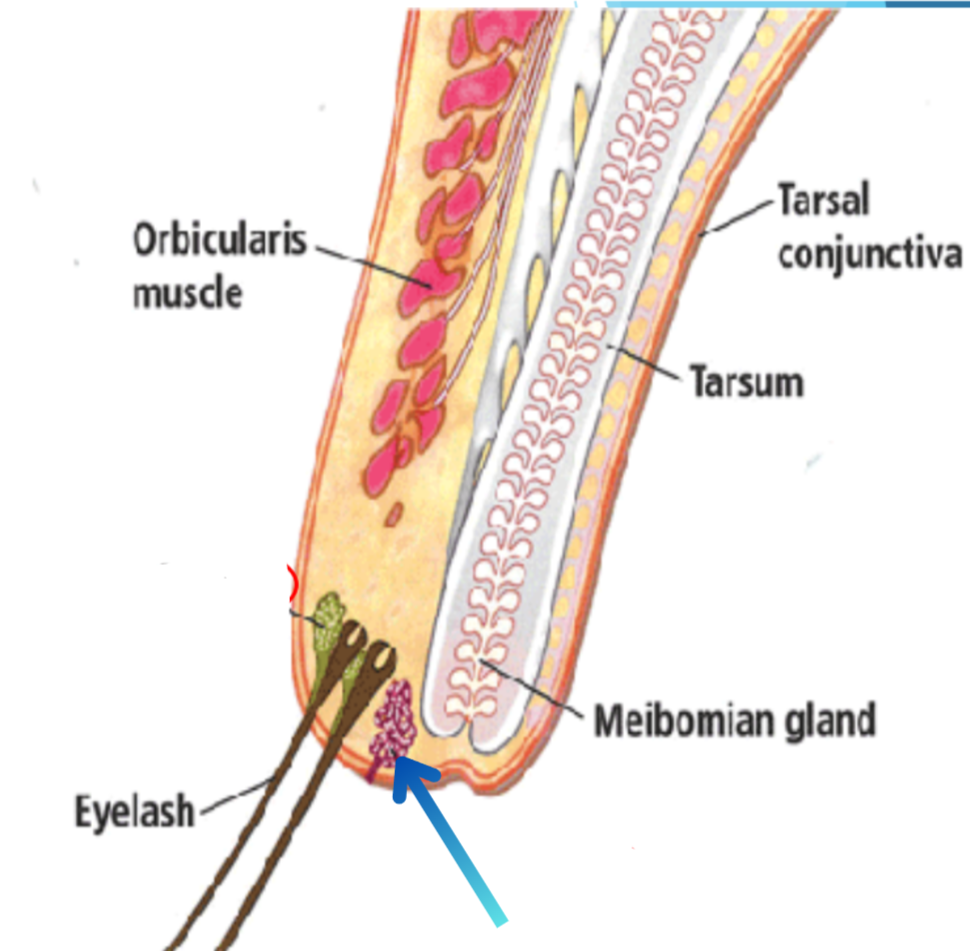
Glands of moll
Modified apocrine sweat gland
Found on margin of the eyelid (More in lower than upper)
Functions of eyelid
1. Reconstitution of the tear film.
2. Maintain the integrity of the corneal surface.
3. Maintain the proper position of the globe within the orbital contents.
4. Regulate the amount of light allowed to enter the eye.
5. Protect from airborne particles.
6. Coverage of the eye during sleep.
Upper eyelid elevators
Primary: Levator palpebrae superiorois
Superior palpebral muscle of Muller’s
Frontalis
SPMM and frontalis important when levator is defective
Lower lid retractors
No true conterpart to the levator inferiorly
Inferior rectus is attached to the inferior tarsus. Traction exerted helps depress the lid.
Inferior palpebral muscle (Inferior version of muller’s muscle)
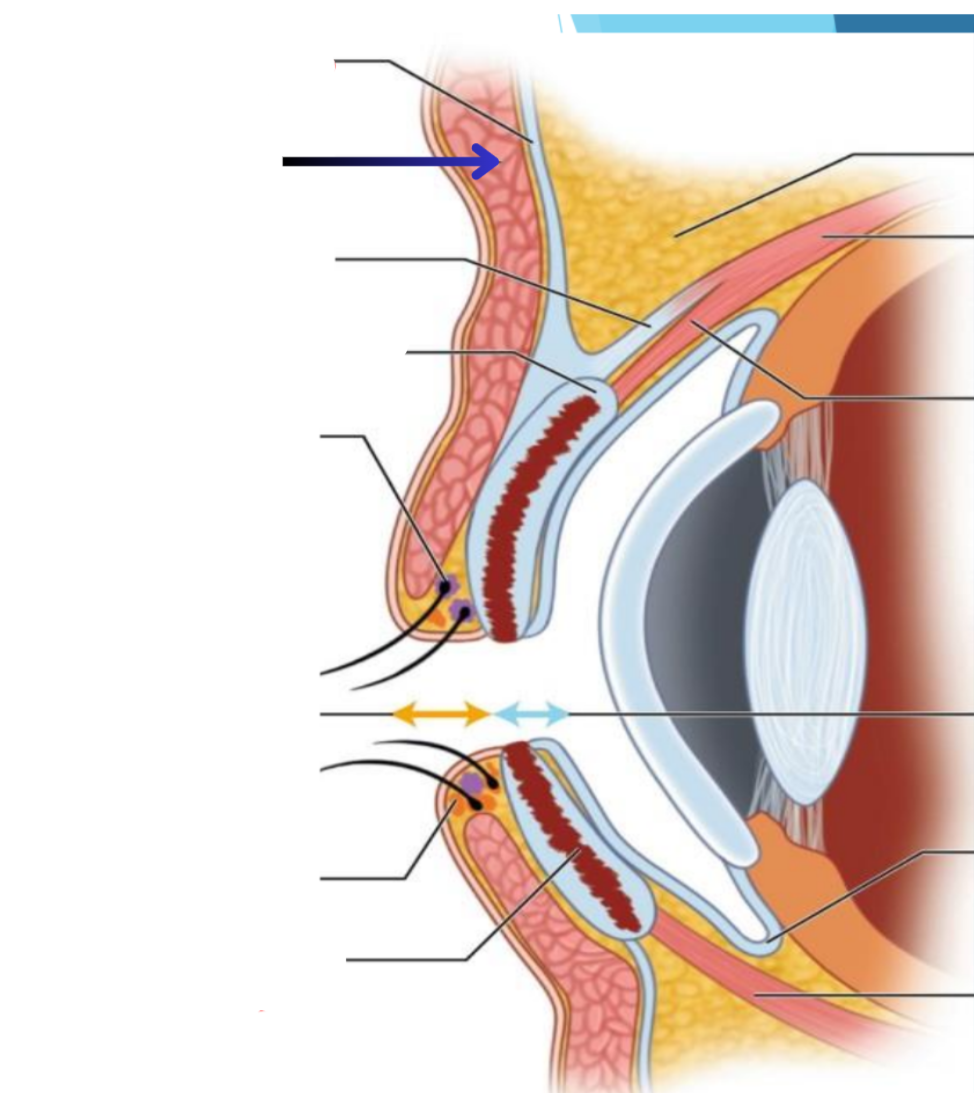
Orbicularis oculi
Involuntary (Automatic) blinking in early life
Rare since babies dont suffer from dryness
Rate of involuntary blinking
15 times per minute (12-20)
Blink rate increases in…
Dry conditions
Strong air currents
Surprise, anger, or fight
Blinking decreases during…
Visual observations
Movement of lids during blinking
Upper lid begins to close, no lower lid movement
Zipper-like movement from lateral canthus towards medial canthus
Voluntary blinking
Rate and degree of closure under control of the individual
Produced as a protective gesture
Simultaneous contraction of palpebral and orbital portions of the orbicularis
Winking
Unilateral voluntary lid closure
Simultaneous contraction of palpebral and orbital portions of the orbicularis
Blepharospasm
Neuro disorder affecting the muscles controlling eyelids
Starts as switching, can progress to inability opening eyes
Botox is most common treatment
Facial denervation can be done
Bell’s phenomenon
Reflex between facial and oculomotor nuclei
Eye closes → Eye rotates upward and outward
Protective mechanism
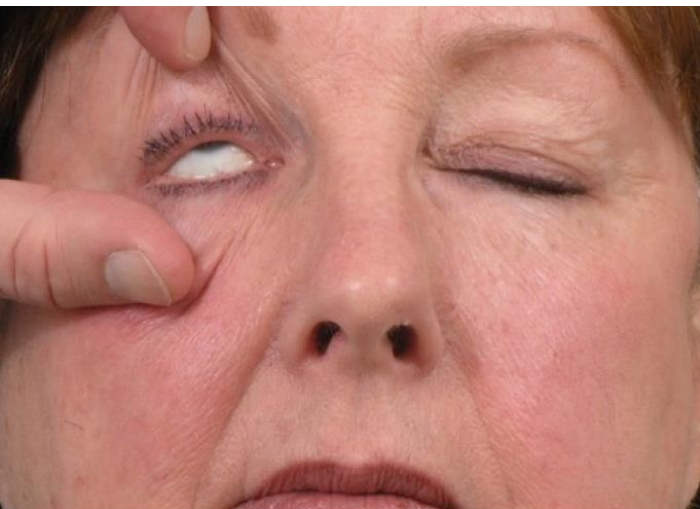
Lagophthalmos
Incomplete eyelid closer

What type of gland is lacrimal gland
Exocrine gland
Secretory lacrimal apparatus
Main lacrimal gland
Acessory secretory lacrimal glands
Glands of krause
Glands of wolfring
Excretory lacrimal apparatus
Lacrimal punctum
Lacrimal canaliculus (Sac and nasolacrimal duct)
Site of lacrimal gland
In lacrimal fossa
Formed by orbital plate of frontal bone and anterolateral roof of orbit
Acute dacryoadenitis
Inflammation of lacrimal gland
Cause: Infection, conjunctivitis, orbital cellulitis
Symptom: Inflammation of palpebral part, painful swelling laterally, S-shaped curve of lid
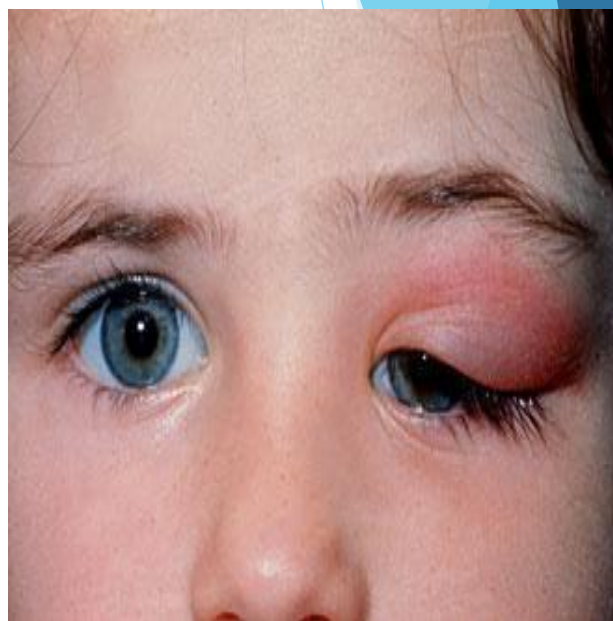
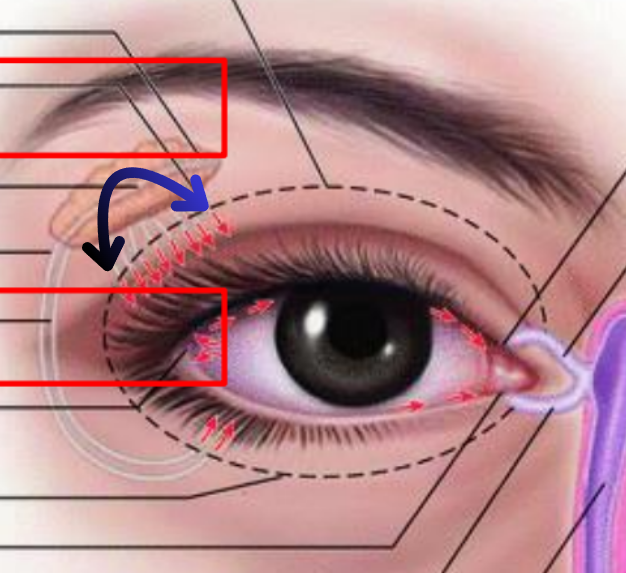
Excretory duct to upper fornix
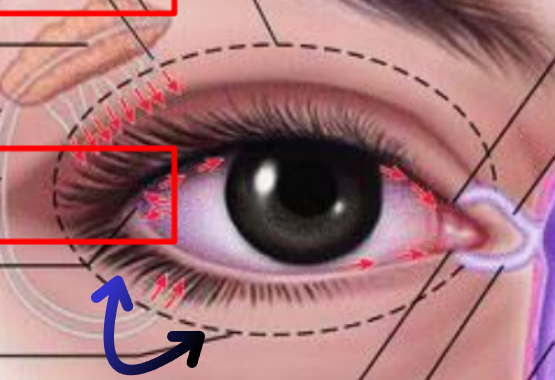
Excretory ducts to lower fornix
Lacrimal ducts numbers
10-12 lacrimal ducts in superior fornix
2-5 from orbital portion
6-8 from palpebral portion
2-3 ducts inferiorly
Dacryops
Lacrimal ductal cyst
Swelling due to retention of lacrimal secretion due to blockage
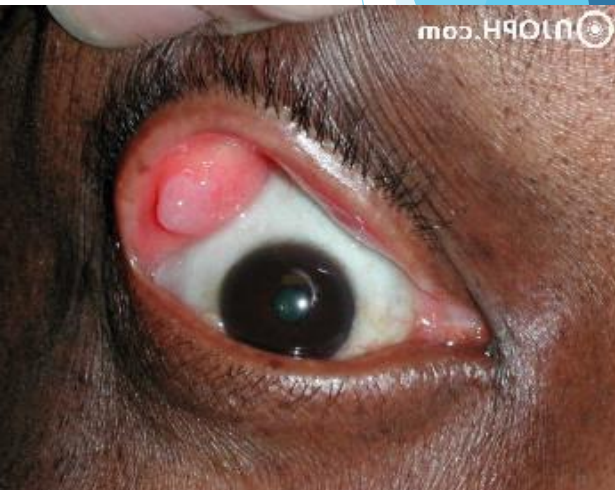
Arterial supply of lacrimal gland
Internal carotid → Opthalmic artery → Lacrimal artery
External carotid artery → transverse facial artery & infraorbital artery
Venous supply of lacrimal gland
Lacrimal gland → Lacrimal vein → Superior ophthalmic vein → Internal jugular vein
Lymphatic drainage of lacrimal gland
Pre-auricular lumph nodes
Superficial parotid lymph nodes
Sensory nerve supply of lacrimal gland
Lacrimal nerve (CN V1)
Retro orbital plexus of fcial nerve (CN VII)
Sympathetic nerve supply of lacrimal gland
Carotid plexus of cervical sympathetics
Secretomotor nerve supply of lacrimal gland
Superior salivary nucleus (CN VII)
Lacrimal punctum
Upper (6mm from inner canthus) and lower punctum (6.5mm from inner canthus)
Do not overlap on eyelid closure
Sit atop papilla lacrimalis
Avascular compared to surrounding tissue
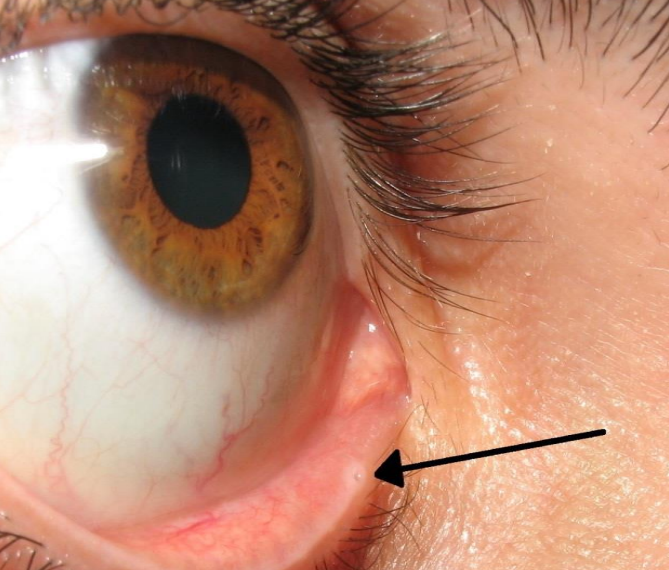
Papilla lacrimalis
Elevated mound on the lids that the punctum sit on
Lacrimal canaliculi
Passage tears go through directly after entering the puncta
Upper and lower canaliculi (For both punctum)
Lead to the lacrimal sac
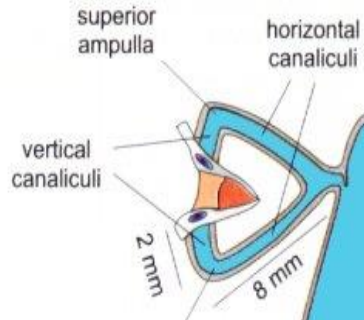
Length of lacrimal canaliculi
8-12mm long
Length of course of lacrimal canaliculi
Vertical length : 2 mm
→ Angle of ampula
Horizontal length: 8-10mm
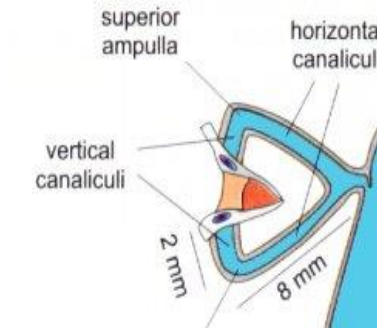
Danger triangle of the face
Bridge of nose to corners of the mouth
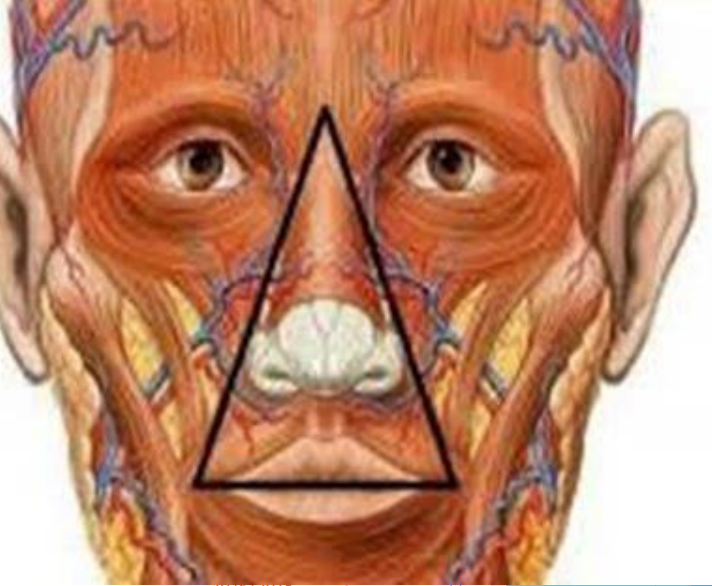
Union of caniculi
90% of anatomy they open into the lacrimal sac
10% of anatomy they open separately into the sac
Valve of rosenmuller
Mucosal fold that prevents tears and other debri from going sac → canaliculi
Fossa of lacrimal sac
Frontal process of maxillary bone and the lacrimal bone
Length and volume of lacrimal sac
Length: 15 mm
Volume: 20 cc
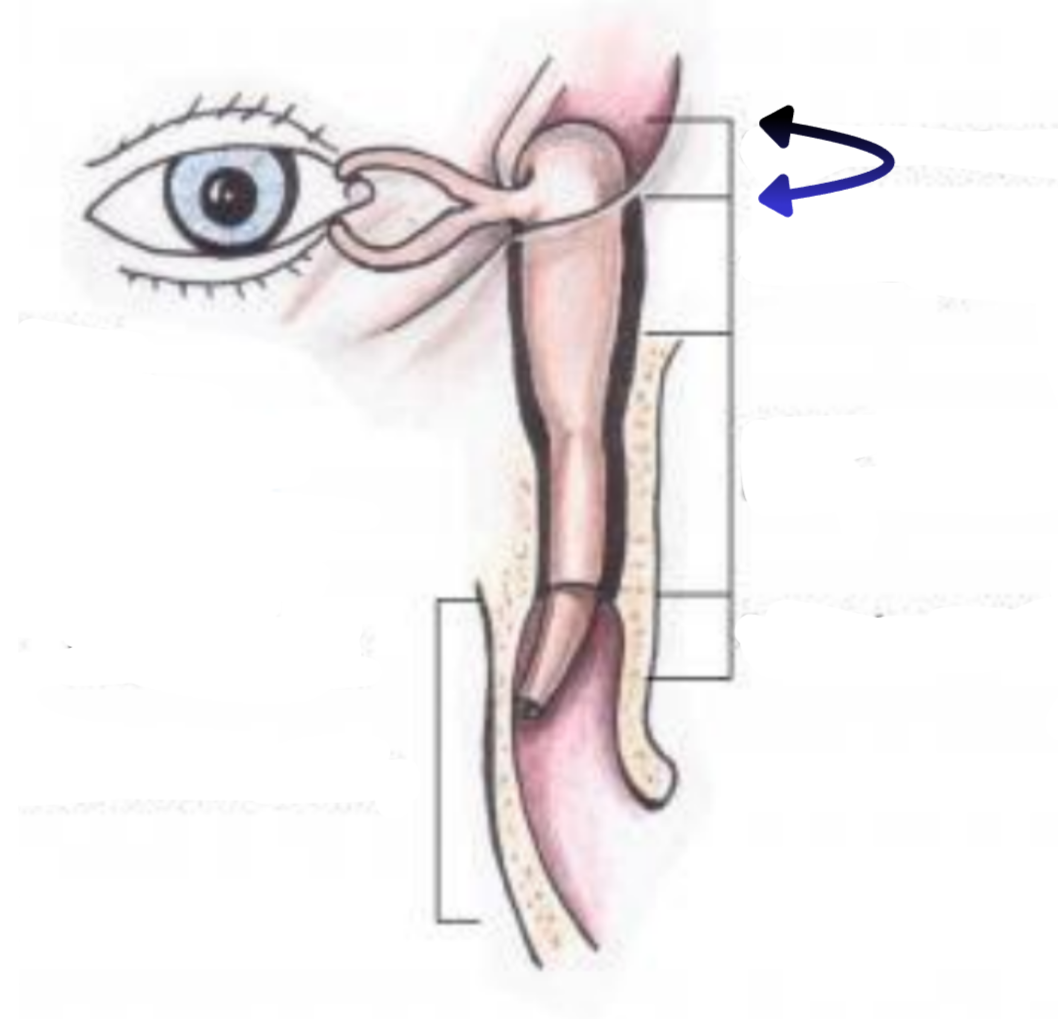
Fundus of lacrimal sac
3-5 mm
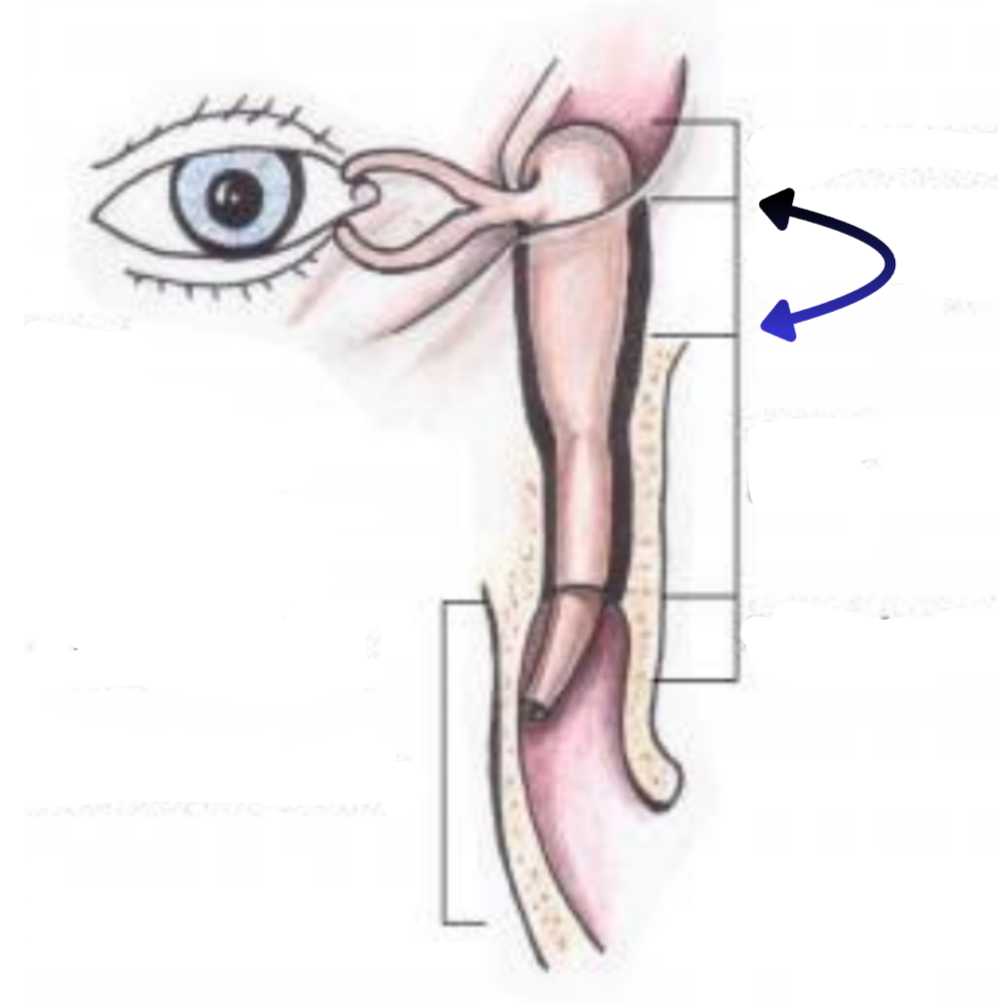
Body of lacrimal sac
10-12 mm
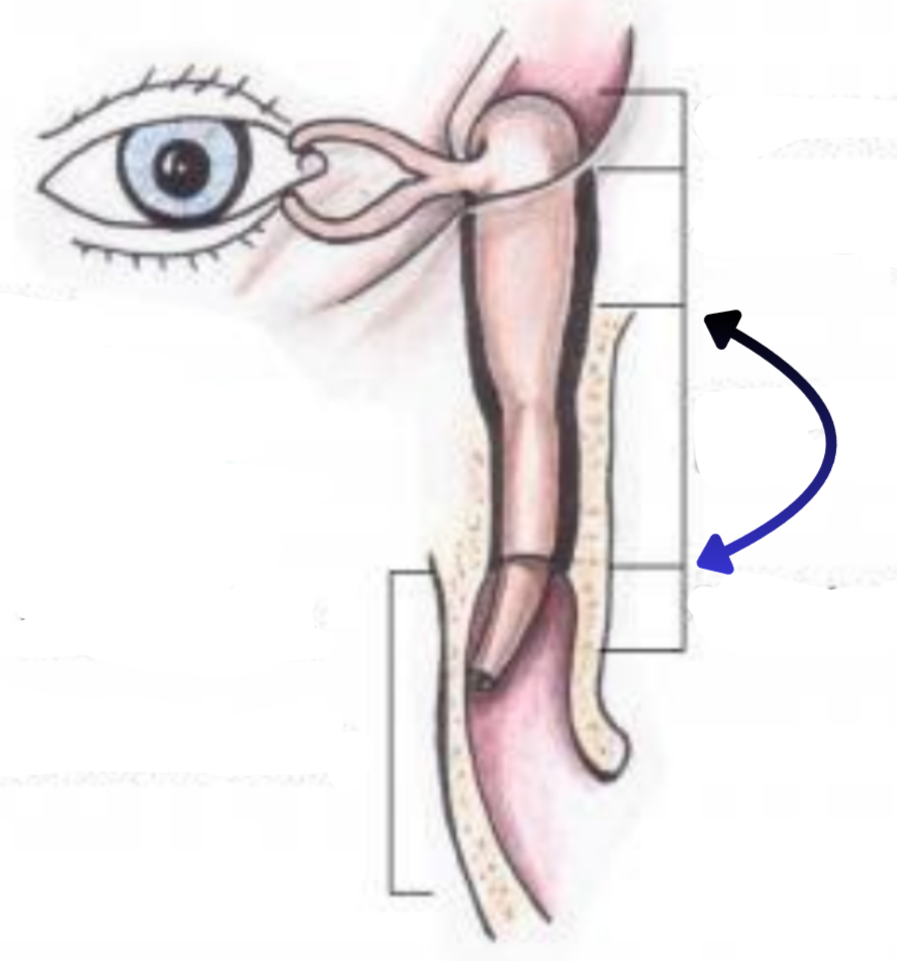
Interosseous part
12mm
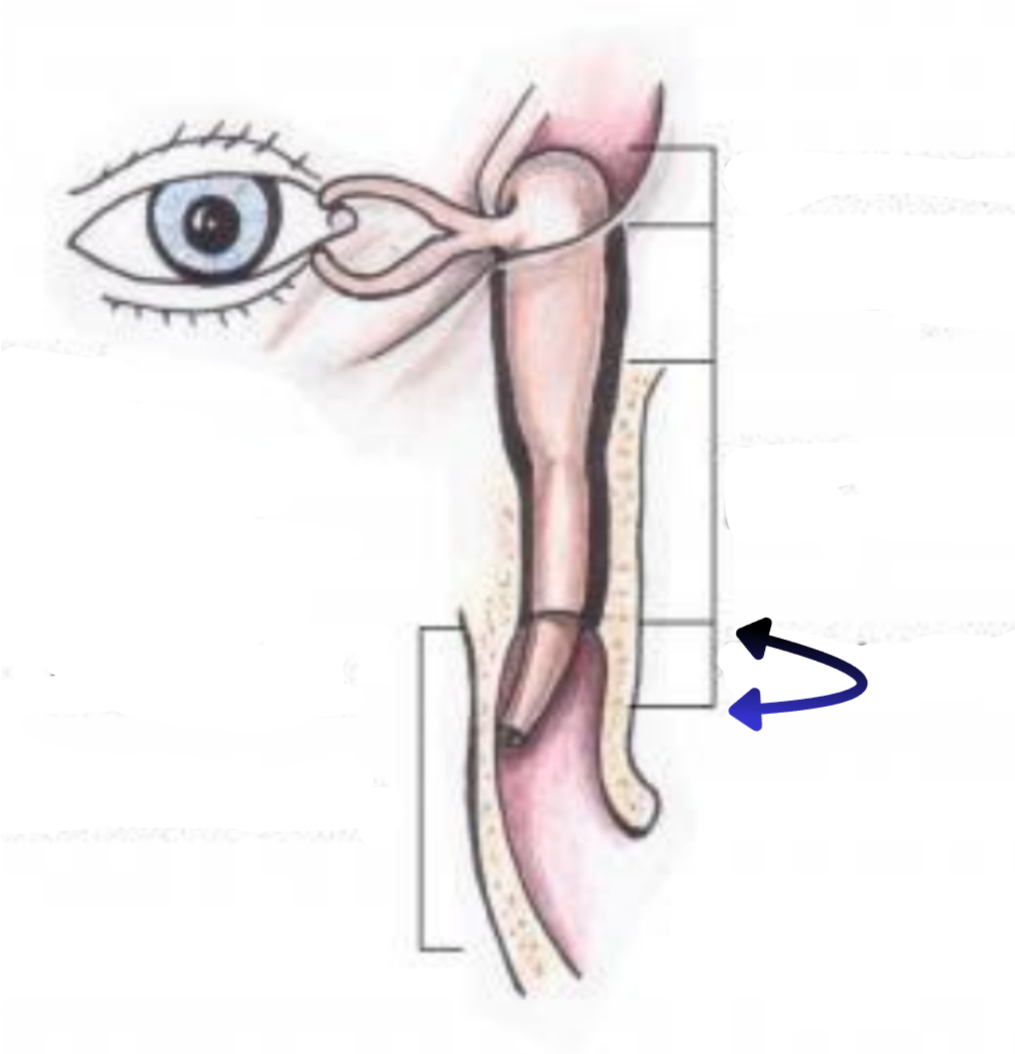
Intrameatal part
5mm
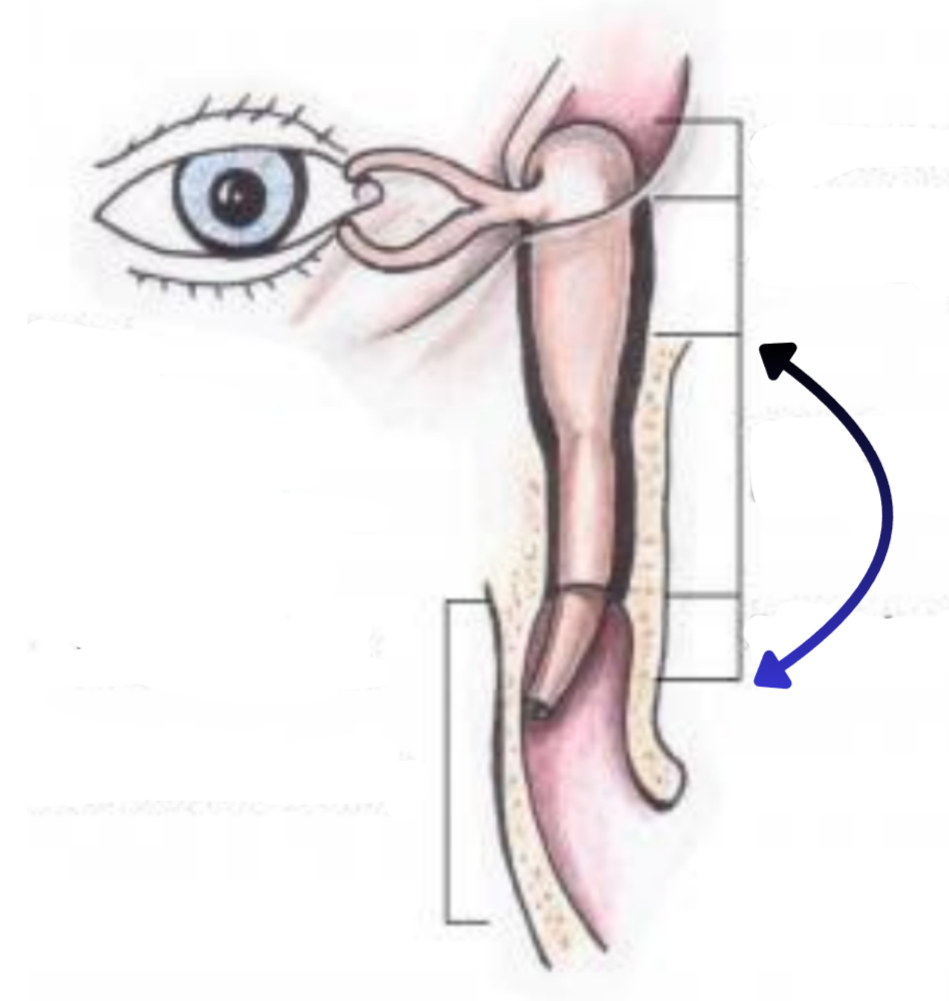
Nasolacrimal duct
18 mm length
3mm diameter
Intraosseus part and intrameatal part
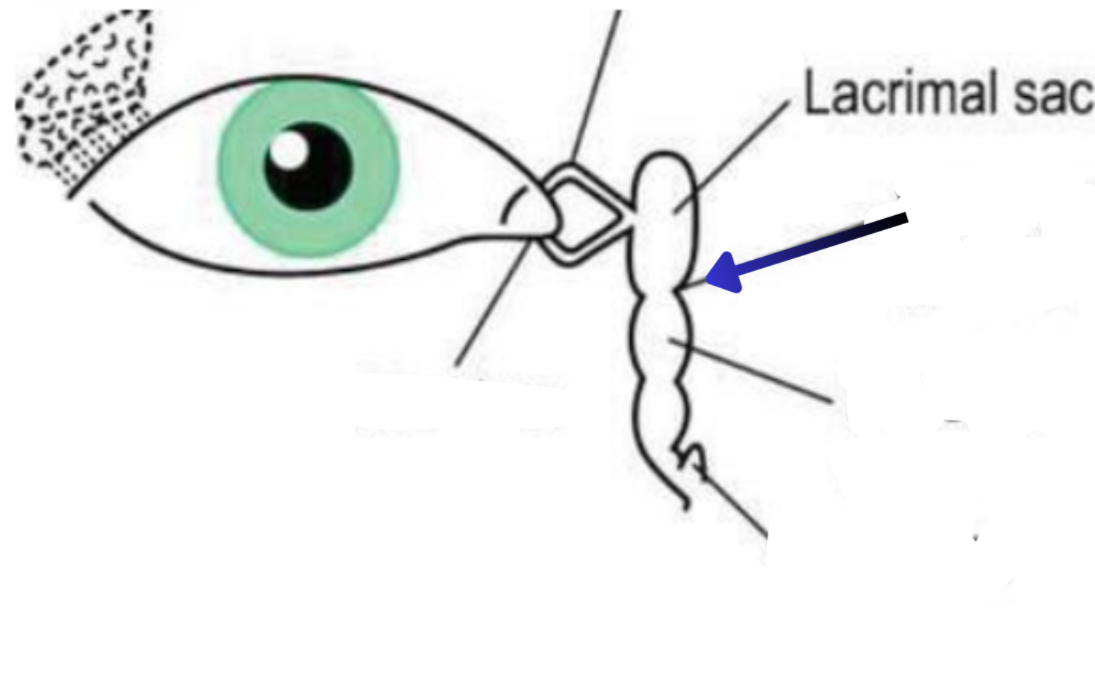
Valve of krauss
Between body of sac and naso-lacrimal duct
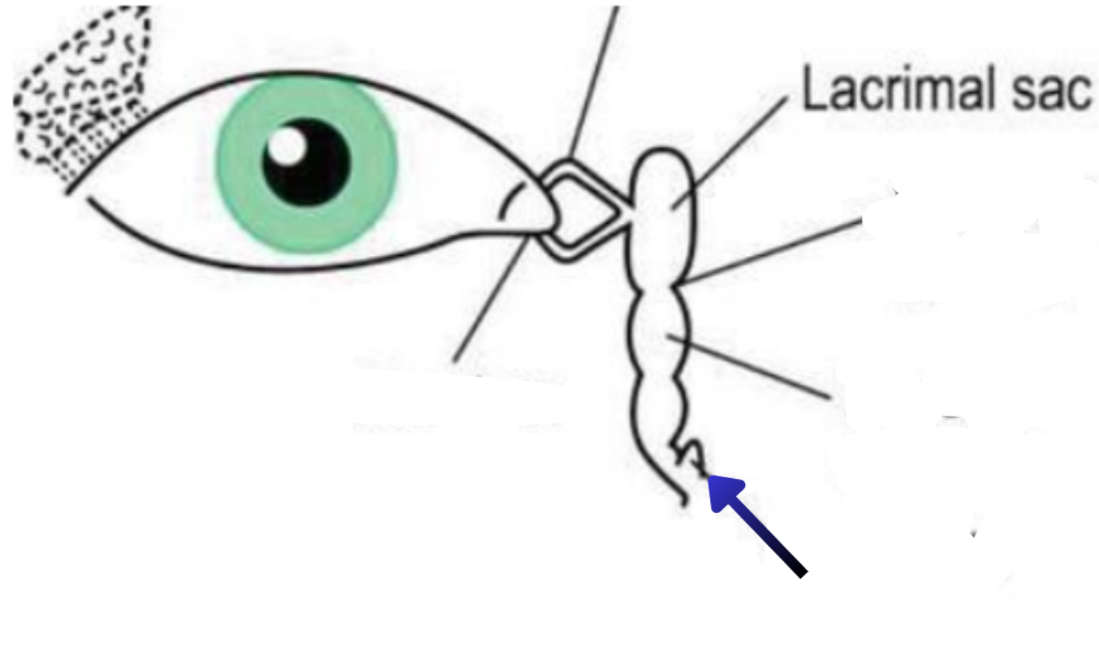
Hasner’s valve
Found at end of nasolacrimal sac → nasal cavity
Flow of tears
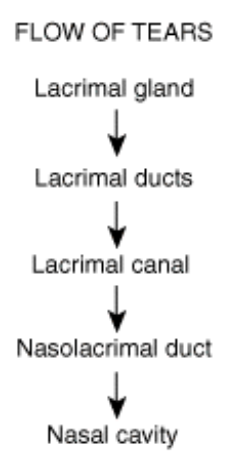
Basic secretors
Mucin secreting goblet cell of conjunctiva
Glands of krause & wolfring
Tarsal gland
Gland of zeiss & moll
Reflex secretion
Response to sensation from cornea/conj
CN V reaction
Production of more tears due to irritation of eye